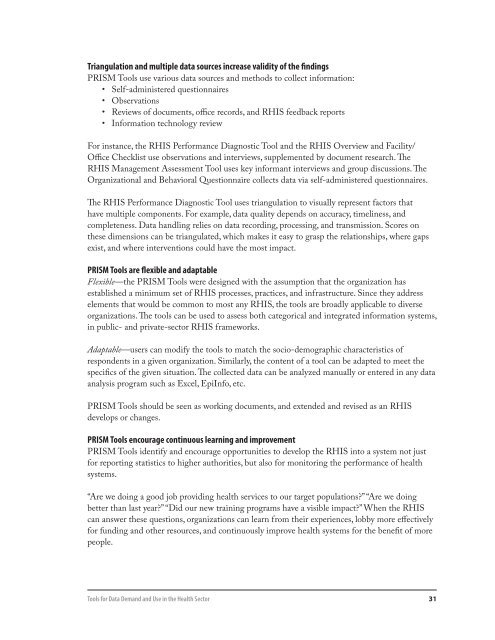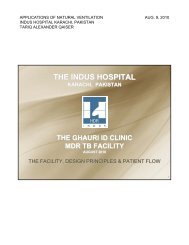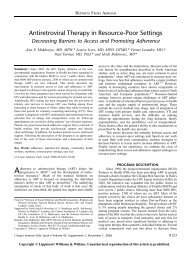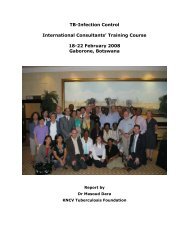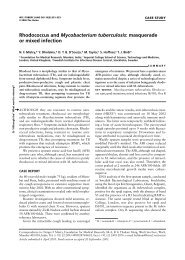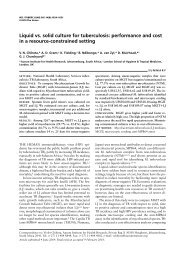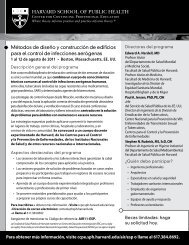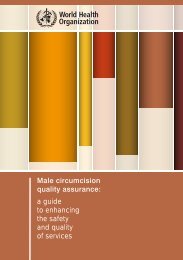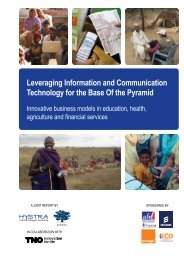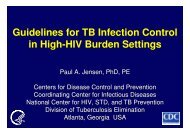PRISM_DescriptionOfTools.pdf - GHDonline
PRISM_DescriptionOfTools.pdf - GHDonline
PRISM_DescriptionOfTools.pdf - GHDonline
You also want an ePaper? Increase the reach of your titles
YUMPU automatically turns print PDFs into web optimized ePapers that Google loves.
Triangulation and multiple data sources increase validity of the findings<br />
<strong>PRISM</strong> Tools use various data sources and methods to collect information:<br />
• Self-administered questionnaires<br />
• Observations<br />
• Reviews of documents, office records, and RHIS feedback reports<br />
• Information technology review<br />
For instance, the RHIS Performance Diagnostic Tool and the RHIS Overview and Facility/<br />
Office Checklist use observations and interviews, supplemented by document research. The<br />
RHIS Management Assessment Tool uses key informant interviews and group discussions. The<br />
Organizational and Behavioral Questionnaire collects data via self-administered questionnaires.<br />
The RHIS Performance Diagnostic Tool uses triangulation to visually represent factors that<br />
have multiple components. For example, data quality depends on accuracy, timeliness, and<br />
completeness. Data handling relies on data recording, processing, and transmission. Scores on<br />
these dimensions can be triangulated, which makes it easy to grasp the relationships, where gaps<br />
exist, and where interventions could have the most impact.<br />
<strong>PRISM</strong> Tools are flexible and adaptable<br />
Flexible—the <strong>PRISM</strong> Tools were designed with the assumption that the organization has<br />
established a minimum set of RHIS processes, practices, and infrastructure. Since they address<br />
elements that would be common to most any RHIS, the tools are broadly applicable to diverse<br />
organizations. The tools can be used to assess both categorical and integrated information systems,<br />
in public- and private-sector RHIS frameworks.<br />
Adaptable—users can modify the tools to match the socio-demographic characteristics of<br />
respondents in a given organization. Similarly, the content of a tool can be adapted to meet the<br />
specifics of the given situation. The collected data can be analyzed manually or entered in any data<br />
analysis program such as Excel, EpiInfo, etc.<br />
<strong>PRISM</strong> Tools should be seen as working documents, and extended and revised as an RHIS<br />
develops or changes.<br />
<strong>PRISM</strong> Tools encourage continuous learning and improvement<br />
<strong>PRISM</strong> Tools identify and encourage opportunities to develop the RHIS into a system not just<br />
for reporting statistics to higher authorities, but also for monitoring the performance of health<br />
systems.<br />
“Are we doing a good job providing health services to our target populations?” “Are we doing<br />
better than last year?” “Did our new training programs have a visible impact?” When the RHIS<br />
can answer these questions, organizations can learn from their experiences, lobby more effectively<br />
for funding and other resources, and continuously improve health systems for the benefit of more<br />
people.<br />
Tools for Data Demand and Use in the Health Sector<br />
31


